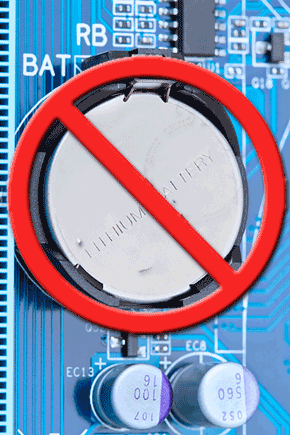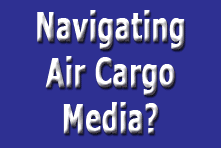| 
 o,
this is not a story about Boeing’s B787, although for all
the public knows, the recent grounding of the fledgling fleet of
new generation aircraft due to suspected fires has brought an almost
razor sharp focus to the lithium power source. o,
this is not a story about Boeing’s B787, although for all
the public knows, the recent grounding of the fledgling fleet of
new generation aircraft due to suspected fires has brought an almost
razor sharp focus to the lithium power source.
But a look at lithium batteries reveals they were an issue long
before the B787, in fact they have been controversial, heavily under
discussion, and subject to scrutiny by regulators and other stakeholders
for more than a decade.
Since 2008, the regulatory requirements
applicable to this commodity have changed considerably in all modes
of transport, but the changes in the IATA Dangerous Goods Regulations
especially have substantially complicated and become an issue in
dangerous goods training for shippers, forwarders, and operators.

On July 24th, 2013, the UAE General Civil
Aviation Authority (GCAA), in cooperation with the U.S. NTSB, FAA,
and representatives from Boeing and GE, released an exhaustive,
compelling, and overwhelming final accident report for UPS Flight
006.
By way of background, on a flight from Dubai
International Airport to Cologne Bonn Airport on September 3, 2010,
UPS Flight 6, a UPS Boeing 747-400F, registration N571UP, crashed
near the Dubai Silicon Oasis at approximately 7:45pm local time
after declaring an emergency fifty minutes after takeoff.
Both crew members were killed, the first
such casualties in UPS's history.
The report clearly mentions that the accident
source was a Lithium battery fire in the forward main deck of the
UPS 744 freighter, and that the post-crash investigation clearly
identified Lithium batteries in the cargo that were subject to declaration
requirements; however, according to UPS loading information, no
declared dangerous goods were on board.
 Given the nature of the cargo—among
it cell phones, toys, consumer electronics, and the like—
it is doubtful that these undeclared dangerous goods shipments could
not have been identified given additional scrutiny, especially for
a flight from the heart of battery production in Asia to Europe.
Given the nature of the cargo—among
it cell phones, toys, consumer electronics, and the like—
it is doubtful that these undeclared dangerous goods shipments could
not have been identified given additional scrutiny, especially for
a flight from the heart of battery production in Asia to Europe.
As outlined in the exhaustive accident report,
“the accident aircraft impacted the ground inside the confines
of Nad Al Sheba military base nine nautical miles south of Dubai,
United Arab Emirates.
“During the impact, the aircraft destroyed
an unknown number of buildings and trucks,” and just sheer
luck prevented the aircraft from crashing into densely populated
areas; the aircraft’s Captain was incapacitated due to a lack
of oxygen, which was a result of malfunctions caused by the cargo
fire, and the Copilot flying the aircraft could neither see his
instruments nor the ground because of smoke in the cockpit.
The report goes on to say that “as
detailed in other sections of this report, a cargo fire originating
on the main cargo deck breached the cargo compartment liner, severely
damaging the control cable support trusses, oxygen system, and other
essential systems, impairing the ability of the crew to safely operate
the aircraft for the duration of the flight from the time of the
first fire indication.
“Due to the cargo compartment liner
failing to operate as an effective fire and smoke barrier, the supernumerary
and cockpit areas filled with continuous smoke.
“The smoke did not abate for the duration
of the emergency.”
Although the GCAA is careful in making general
statements, they admit that “to date, the hazard posed by
lithium and lithium-ion batteries has not been fully understood
and quantified by the fire protection community”—a possible
wake-up call for the stakeholders involved.
The report goes on to highlight the findings
through testing conducted by the FAA Tech Center, which indicated
that “there are particular propagation characteristics associated
with lithium batteries.
Overheating has the potential to create
thermal runaway, a chain reaction leading to self-heating and release
of a battery’s stored energy.
In a fire situation, the air temperature
in a cargo compartment fire may be above the auto-ignition temperature
of lithium.
“For this reason, batteries that are
not involved in an initial fire may ignite and propagate, creating
a risk of a catastrophic event.
“The existence and magnitude of the
risk will depend on such factors as the total number and type of
batteries on board an aircraft, the batteries’ proximity to
one another, and existing risk mitigation measures in place, which
can include the type of fire suppression system on an aircraft,
appropriate packaging, and stowage of batteries.”
It is concluded that “Class D fires
are a chemical reaction which is self-sustaining. Battery fires
are electric fires, to extinguish the fire the short must be removed
and the temperature reduced as the short is internal to the cell
during a thermal runaway, the thermal runaway has to be stopped
to contain the fire hazard.
“Uncontained, the battery discharge
can spread to adjacent cells, establishing a chain reaction.
“The explosive potential of lithium
metal cells can easily damage (and potentially perforate) cargo
liners, or activate the pressure relief panels in a cargo compartment.
Either of these circumstances can potentially lead to a loss of
Halon 1301 [in class C cargo compartments], allowing rapid fire
spread within a cargo compartment to other flammable materials.
“For this reason, lithium metal cells
are currently prohibited as bulk cargo shipments on passenger-carrying
aircraft.” (Note from the Editor: The prohibition of transporting
Lithium-metal batteries aboard passenger-carrying aircraft is stipulated
in 49 CFR and applies only for transports to, from, or through the
U.S. and aboard U.S.-registered aircraft worldwide; generally the
ICAO TI and the IATA DGR permit the carriage of lithium-metal batteries
aboard passenger-carrying aircraft elsewhere).
The UAE GCAA issued the following recommendations
with the final accident report for UPS flight 006:
 Enhanced crew member training and emergency checklists
Enhanced crew member training and emergency checklists
 Enhanced customer and employee training on dangerous goods
Enhanced customer and employee training on dangerous goods
 FAA certification for an in-container fire suppression system
FAA certification for an in-container fire suppression system
 calling for harmonization of domestic and international shipping
calling for harmonization of domestic and international shipping

Since Lithium metal battery fires cannot
be suppressed by means of the fire suppressant gas Halon used aboard
aircraft, and given the highly volatile nature of certain batteries,
one would wish the voice of IFALPA, the pilots’ interest group,
would be heard.
IFALPA’s and ALPA’s input was
instrumental to U.S. DOT – PHMSA’s (Pipeline and Hazardous
Materials Safety Administration) NPRM HM-224F which, if adopted,
would have imposed much stricter regulations on the transport of
Lithium batteries at least to, from, and through the U.S. as well
as aboard US-registered aircraft operating elsewhere.
However, the Obama administration directed
PHMSA and FAA not to implement stricter rules on the transport of
Lithium batteries, owing to pressure from PRBA (The Rechargeable
Battery Association), other lobby groups, and the overall fear that
such unilateral measure might hurt U.S. trade.
It is understandable that the pilots flying
the aircraft have a very valid interest to protect the life and
health of their passengers as well as their own, and things tend
to look different when seen through a cockpit window versus some
office in Washington, D.C. What might be useful in all of this is
if other special interest groups are given equal voice to PRBA which,
despite extensive research into the risks of shipping Lithium batteries
undertaken by the U.S. FAA, the UK CAA, and the Transport Canada
(Freighter Airplane Cargo Fire Risk, Benefit and Cost Model), still
calls for further relaxation of lithium battery-related regulations.

It actually depends on the type of the battery.
Primary batteries, also called Lithium-metal, are typically the
non-rechargeable type frequently found in button cells, camera batteries,
and the like; secondary batteries, also called Lithium-ion or Lithium-polymer,
are rechargeable and found in laptops, cellphone, cordless power
drills and a multitude of other equipment.
More often than not, equipment may contain
both types of batteries.

First of all, many of the modern wonders
of technology contain these battery types.
Depending on type and size they are more
or less subject to regulatory requirements, and many consumers as
well as retailers are either not aware of these regulatory requirements
or fail to comply for a multitude of reasons.
The situation is not helped by the fact
that legal requirements in this matter contradict other laws aiming
at consumer protection, for example:
Let’s assume that you ordered a laptop
in an online store.
This purchase will typically be subject
to a warranty and, in some cases, may be reversed without reason
in a certain timeframe if the purchaser would like to cancel.
However, even if the original shipment made
to you was in compliance with HazMat requirements, the average customer
is not able to prepare a return shipment that is in full compliance
with the applicable dangerous goods regulations.
Making things worse, the shipping of Lithium
batteries presumed, suspected, or known to be defective is entirely
forbidden by air, and in other modes depends on complicated arrangements,
depending on the mode of transport.
One of the few regulatory authorities that
has recognized this issue and taken a proactive action is the U.S.
PHMSA, which published an ANPRM (advanced notice of proposed rulemaking)
on July 5th (Docket number PHMSA-2011-0143 [HM-253]) in the Federal
Register.

Let us assume you wake up and realize that
you’ve overslept because your new iPhone is dead, and remains
dead even after being connected to a charger.
That is not just an issue with your boss
when you report to work late; it’s also a regulatory issue,
since iPhone batteries (together with an increasing number of other
phones) can no longer be uninstalled by the consumer, at least not
without losing warranty coverage.
Since you won’t be able to tell whether
the battery is the issue or not, you can’t actually ship the
phone back to repair at all, although your rights as a consumer
clearly give you warranty coverage. Dropping the phone off in the
next store will not help, since it must get to its repair location
from there.
Obviously, reverse logistics solutions are
found where there is increased pressure from regulators for compliancy;
in the UK, Apple holds a governmental exemption to domestically
ship phones with presumably defective batteries by ground transport.
Although similar issues exist in other markets,
without the pressure from regulators, progress will not happen.
Apple hasn’t filed any applications in Germany, for example.
Interesting enough, some logistic providers
seem to care little to none about compliance with the dangerous
goods-related requirements and actually receive praise for strictly
non-compliant products.

German logistics giant Deutsche Post World
Net was commended by the German authorities for help in recycling
certain electronic products and minimizing waste.
DP's “Electroreturn” product
also offers consumers free
shipping of consumer gadgets (including cellphones) to a recycling
facility.
However, when a representative from DPWN/DHL
questioned a German government delegate at the Lithium Battery Symposium
February 2013 in Frankfurt, asking if this “Electroreturn”
product could be brought in compliance with existing regulatory
requirements for transport by mail, the answer by Ms. Gundula Schwan
from the German Ministry for Transport was bold and clear:
“Not at all.”
At that time, any transport of damaged Lithium batteries in any
mode of transport within Europe was possible only by means of a
special permit issued by the relevant governmental authorities.
In the meantime, Special Provision 661 implemented in the 2013 ADR
has provided some further options for road transport (although still
requiring a special permit) and Multilateral Agreement 259 ADR,
which went into force July 15th, 2013, provides even more convenient
options within the signatory states of this multilateral agreement.
However, the transport of damaged batteries in the mail, and particularly
within the air mail, is a no-go.
Still, the product continues to be offered,
and almost every single issue of German logistics-focused newspapers
is touting DHL/DPWN’s achievement in providing “unique
logistic solutions in the B to C and reverse logistic sector.”

In a very simplified manner, Lithium-metal
batteries and Lithium-ion batteries are divided in the so-called
‘Excepted’ type (metal cells with 1g or less of lithium,
or metal batteries with 2g or less of lithium, and Lithium-ion cells
with 20 Watt-hours or less and Lithium-ion Batteries with 100 Wh
or less); and the “fully regulated types,” which exceed
the aforementioned thresholds and are subject to all requirements
of the Dangerous Goods Regulations.
The ‘Excepted’ battery types,
shipped in certain quantities, do not require a formal transport
document (the “Shipper’s declaration for Dangerous Goods”)
or class 9 hazard label and, most notably, shippers who only ship
these ‘acceptable’ battery types are—owing to
lobbying actions by PRBA—not subject to the otherwise stringent
dangerous goods training requirements for the air transport mode.
Note that the exceptions apply on the package
level, so packing hundreds or thousands of packages in one ULD is
in compliance, even by means of Shipper-built units (called BUP
in short), and these packages of ‘excepted’ batteries
will not even show on the Dangerous Goods information presented
to the flight commander, the NOTOC (or NOPIC, in the U.S.).
Matters are not helped by numerous further
exemptions provided in the relevant “packing Instructions
965 to 970,” such as button cells of the excepted type installed
in equipment not subject to the requirement to apply a handling
label and the prescribed text on the Air Waybill. Also,
equipment which contains four or less cells or two or less batteries
of the excepted type does not require anything, although it is subject
to accident and incident reporting requirements, where such accident
or incident occurs.
The biggest threat—that much is agreed
upon between all stakeholders, including the industry lobby group,
the PRBA—is twofold:
First, the shipping of untested batteries:
batteries manufactured as cheap clones of brand batteries, but which
have never undergone the required testing and quality management
procedures.
It must be clearly said that this is not
an issue with OEM or third party batteries—most of the world’s
batteries come from Asia, particularly from the plants in the Pearl
River delta, and this goes for both “legal” and “illegal”
batteries.
Second, the shipping of batteries—tested
or not, of the ‘excepted’ type or fully regulated dangerous
goods in class 9—as undeclared, thus hidden, DG.
The exceptions provided within Packing Instructions
965 to 970 do save the shipping industry considerable money, but
only at the expense of operator and Ground Handling Agency frontline
staff, who will have to make an assessment whether equipment offered
as general cargo and known or presumed to contain batteries is subject
to certain exceptions, and thus is not required to bear any indicator
pointing to the batteries contained, or if it is simply an undeclared
Dangerous Good.

Neither IATA nor the ICAO Dangerous Goods
panel seem to be able to close this gap of whether or how to question
the nature of each consignment and ascertain it’s non-dangerous
nature, where a general description befitting both types of cargo
has been used.
Some of the provisions made within the ICAO
“Technical Instructions for the Safe Transport of Dangerous
Goods by Air” or the IATA “Dangerous Goods Regulations”
must be called incomplete at best and misleading at worst.
There are provisions made for so-called
“active devices” such as temperature loggers, which
are used to record the temperature throughout transport for certain
perishable goods like pharmaceuticals:
“Devices such as radio frequency identification
(RFID) tags, watches and temperature loggers, which are not capable
of generating a dangerous evolution of heat, may be transported
when intentionally active. When active, these devices must meet
defined standards for electromagnetic radiation to ensure that the
operation of the device does not interfere with aircraft systems.”
What are these “defined standards?”
The manuals don’t say. So how is the shipper supposed to know?
For any transport to, from, or through Europe,
such “active equipment” must have been demonstrated
to conform with the electromagnetic radiation testing requirements
of EC Directive 2004/108/EC; and to, from, or through the U.S. with
the FAA certification requirements applicable to such devices.
However, such (mostly) small gadgets would
otherwise fall under the aforementioned exemptions (no Lithium battery
handling label, no indication on the AWB) which is the position
of IATA, but not of some regulators.
The German LuftEBV - Verordnung zur Regelung
des Betriebs von nicht als Luftfahrtgerät zugelassenen elektronischen
Geräten in Luftfahrzeugen, or “Directive for the regulation
of electronic devices aboard aircraft which have not been certified
under airworthiness standards” clearly requires that the pilot
in command is informed about the presence of such active devices,
something unbeknownst to most shippers and forwarders.
On the other side, the confusion caused
by unclear language and contradicting statements has caught up with
the regulators as well.
Neither the ICAO Technical Instruction nor
the IATA DGR require that the number of packages with ‘accepted’
batteries be indicated on the air waybill, where such packages are
required to bear the Lithium battery handling label.
However, it would be most prudent to do
so, which is why the German watchdog LBA has informed the major
operators and GHAs in Germany in a circular dating May 6th , 2013,
that either the number of packages with ‘accepted’ Lithium
batteries be shown on the AWB, or else the entire consignment is
to be rejected.
This, however, upset many foreign shippers—namely
Dutch—whose cargo was left behind in FRA for this reason,
because this requirement was neither contained within the ICAO TI
nor the IATA DGR, nor was it mandated by means of a state variation.
A source close to the matter within the
Dutch government called this move “questionable” and
expressed the opinion that unilateral moves such as this do not
fit into the regulatory structures of a harmonized Europe. “Instead,”
the source went on to say, “LBA should have taken this proposal
to the ICAO DG Panel in the long run and filed a state variation
for immediate implementation of this measure. This would have put
all shippers and forwarders on equal footing, since especially Frankfurt
as a major transit hub has a multitude of shipments not originating
from Germany.”
For the time being, operator variations
related to banning Lithium batteries partially or in total or implementing
additional measures are sprouting up like garden weeds in May, which
seems to indicate that not all IATA member airlines want to follow
ICAO’s and IATA’s position of shipper-friendly leniency.

The “Freighter Airplane Cargo Fire
Risk, Benefit and Cost Model” study jointly undertaken by
U.S. FAA, Transport Canada, and UK CAA predicts that, if no mitigation
action is taken, in the period 2012 until 2021 there will be approximately
6 accidents, ranging from 2 to 12, at 95 percent confidence interval.
The accident costs are estimated to average approximately USD$50
million per annum between 2012 and 2026. PRBA, on the other side,
has called that study “fundamentally flawed” without
being able to challenge the data outlined in the report.
Note from the Editor: “Dangerous Goods” is the international
term used by ICAO and IATA, while for the U.S. the term “Hazardous
Materials” is used throughout 49 CFR and related regulatory
guidance from FAA and PHMSA. The legal source for the international
transport of dangerous goods by air are the “Technical Instructions
for the Safe Transport of Dangerous Goods by Air” published
biennially by the International Civil Aviation Organization. In
practice, however, the “Dangerous Goods Regulations”
of the International Air Transport Association (IATA) are typically
used; the IATA DGR is in full compliance with the ICAO TI but implements
further requirements for operational reasons.
For the purpose of shipping to, from, and through the U.S. by air
as well as shipping aboard U.S.-registered aircraft, both manuals
may only be used as limited through §§ 171.22, 171.23,
171.24 and 171.26 in 49 CFR.
Jens/Geoffrey
|
|





